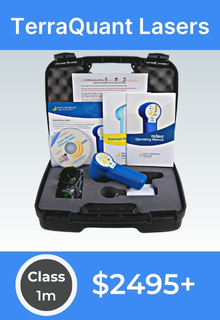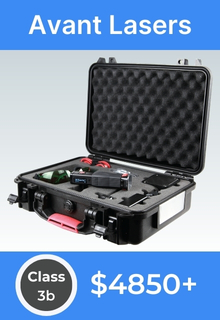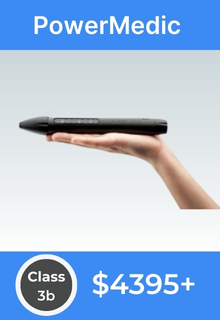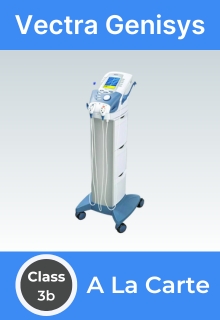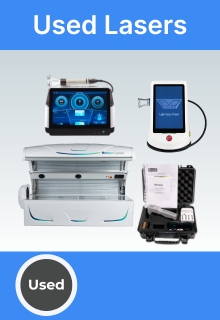Q & A
Cold Laser Power Levels And Their Effect On Cold Laser Therapy
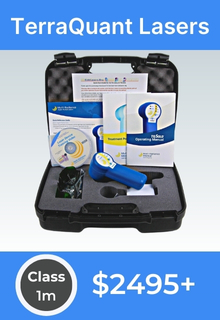
TerraQuant / MR4
- Professional and Home Use
- Up to 50 Watt Peak Power
- Best Selling U.S. System
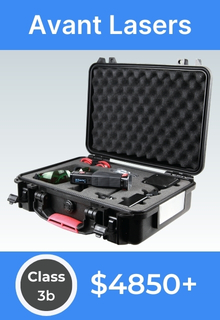
Avant Systems
- The Most Flexible 3b Laser
- Pulsed Sweep and CW
- IR/ Red / Violet
- Broad and Pinpoint
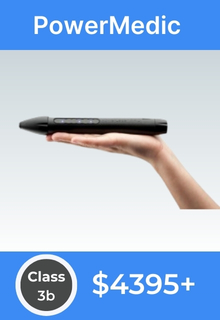
PowerMedic
- Handheld 1W-3W
- Hyperpulsing
- 810nm Danish Design
- Exceptional Quality
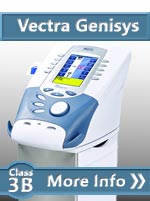
Vectra Genisys
- Pro Only Systems
- Optional Electrical Stim
- 670nm-950nm
- Up to 1.04 Watts Pulsed or CW
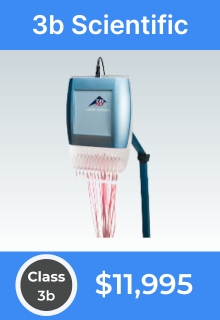
3B Scientific
- Multipoint Therapy
- 12 Simultaneous Points
- 660nm and 785nm
- Acupuncture /Trigger Point
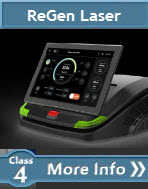
ReGen Laser
- The State of Art
- Class 4
- Up to 6 wave
- Up to 104w
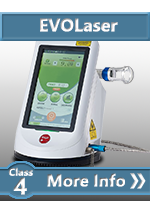
EVOLaser
- 9W-27W
- Single, Dual and Quad Wave
- Continuous and Pulsed

Apollo Lasers
- Handheld, Portable, and Desktop Versions
- Broad and Pinpoint
- 2-5 Watts Continuous
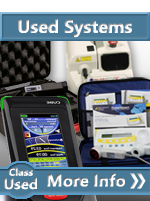
Used Systems
- Pro Only Systems
- Optional Electrical Stim
- 670nm-950nm
- Up to 1.04 Watts Pulsed or CW
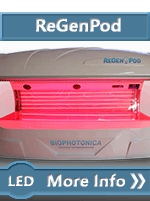
ReGen Pod
- 7.6 kW Pulsed & CW
- Whole Body Pod
- Incredible Results
- The Absolute Best Pod

Guide to Laser
- Learn More

Compare Every Brand
- Learn More
This article is a common sense guide to the importance of power in cold lasers. To illustrate a point, I want to give you a slightly off-the-wall example about electromagnetic power levels and how they interact with certain opjects.
Microwave ovens are a widely accepted device that is based on using the transmission of electromagnetic waves to put energy into object. This object can be tissue like animal meat . Microwave ovens use the fact that 2.4 GHz (way lower than a cold laser) waves naturally excite molecules of waters deep inside an object. Almost every microwave oven has different power levels. If you want to cook your food faster, you increase the power level.
This higher the power level, the more power is transferred into the object and the faster is finishes the process. In many cases, the big difference between a low-power and a high-power laser is treatment time but in some cases, the treatment time can be so great that the product will never reach an appropriate energy density in a resonalble amount of time.
Now let us take a look at cold lasers:
- Operate at a very different wavelength (800nM vs. 2.4GhZ)
- Are much lower power level (50 watt vs. 1500 watts)
- Are designed to promote healing and not generate heat
With these differences in mind, we can see that there is still one area in common. In both cases, power is the main factor in determining how much energy is transferred into the target in a reasonable time.
- In high-power surgical lasers, we know they transfer enough energy to the tissue to cut and burn it.
- We know that lasers are regulated based on the power level and wavelengths they produce.
If we add up these factors, we may conclude that power is a critical factor in the effect that lasers have on tissue. With most products, the goal is to maximize the power transfer to the tissue to maximize healing without any risk of thermal damage.
Another illustration is the common light bulb. The power level (measured in the wattage of the bulb) is clearly displayed on every box so users can select the right power level for their application. Since light energy is absorbed and diffused as it travels through a medium, it is important to find the right power level for each application. A higher power-level output device (or bulb) will have a larger effect on the conditions of a room. Cold Lasers work in a similar way.
The higher the power level of the laser, the greater the effect on the tissue.
Lasers can be extremely powerful and they are regulated. In fact, Laser are classified based on their power, wavelength and possible exposure time.
Classes of Lasers
In general, the classifications of laser were specified by IEC 60825-1 in 08-19-07. Lasers are classified by wavelength and maximum output power but the following classes of lasers are based on the lasers ability to produce damage in exposed people, from class 1 (no hazard during normal use) to class 4 (severe hazard for eyes and skin). Classes 2 and higher must have the triangular warning label and other labels are required in specific cases indicating laser emission, laser apertures, skin hazards, and invisible wavelengths. The MPE or Maximum Permissible Exposure is based on the combined effect of power, wavelength and time (powered on).
- Class 1
A class 1 laser is safe under all conditions of normal use. This means the maximum permissible exposure cannot be exceeded in normal operation. The MPE is measured at the cornea of the human eye or at the skin, for a given wavelength and exposure time. The maximum emission is also related to the pulse duration in the case of pulsed lasers and the degree of spatial coherence. Most LEDs are Class 1. - Class 1M
A Class 1M laser is safe for all conditions of use except when passed through magnifying optics such as microscopes and telescopes. Class 1M lasers produce large-diameter beams, or beams that are divergent. The MPE for a Class 1M laser cannot normally be exceeded unless focusing or imaging optics are used to narrow the beam. If the beam is refocused, the hazard of Class 1M lasers may be increased and the product class may be changed. A laser can be classified as Class 1M if the total output power is below class 3B but the power that can pass through the pupil of the eye is within Class 1. - Class 2
A Class 2 laser is safe because the blink reflex will limit the exposure to less than 0.25 seconds. It only applies to visible-light lasers (400â??700 nm). Class-2 lasers are limited to 1 mW continuous wave, or more if the emission time is less than 0.25 seconds or if the light is not spatially coherent. Intentional suppression of the blink reflex could lead to eye injury. Many laser pointers are class 2. - Class 2M
A Class 2M laser is safe because of the blink reflex if not viewed through optical instruments. As with class 1M, this applies to laser beams with a large diameter or large divergence, for which the amount of light passing through the pupil cannot exceed the limits for class 2. - Class 3R
A Class 3R laser is considered safe if handled carefully, with restricted beam viewing. With a class 3R laser, the MPE can be exceeded, but with a low risk of injury. Visible continuous lasers in Class 3R are limited to 5 mW. For other wavelengths and for pulsed lasers, other limits apply. - Class 3B
A Class 3B laser are hazardous if the eye is exposed directly, but diffuse reflections, such as from matte surfaces like paper, are not harmful. Continuous lasers in the wavelength range from 315 nm and up are limited to 0.5 W. For pulsed lasers between 400 and 700 nm, the limit is 30 mJ. Other limits apply to other wavelengths and to ultrashort pulsed lasers. Protective eyewear is typically required where direct viewing of a class 3B laser beam may occur. - Class 4
Class 4 lasers include all lasers with beam power greater than class 3B. In addition to posing significant eye hazards, with potentially devastating and permanent eye damage as a result of direct beam viewing, diffuse reflections are also harmful to the eyes within the distance called the Nominal Hazard Zone. Class 4 lasers are also able to cut or burn skin. In addition, these lasers may ignite combustible materials, and thus represent a fire risk.
There is not one solution for every applications but one thing seems to ring true, power level is an important fact when selecting a cold laser.

